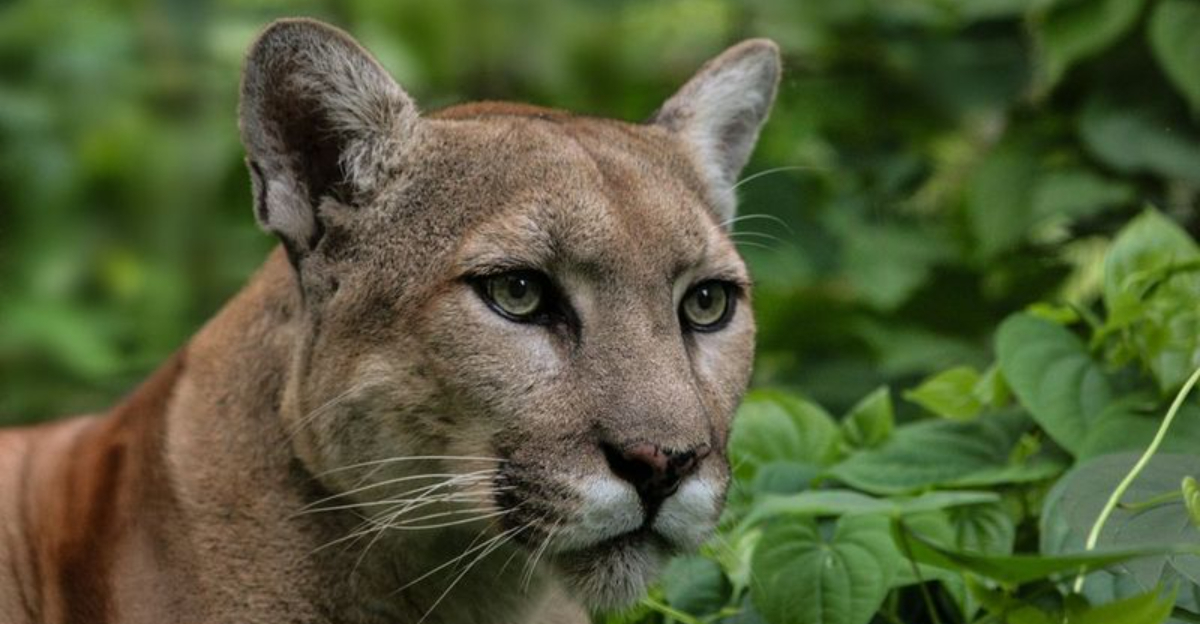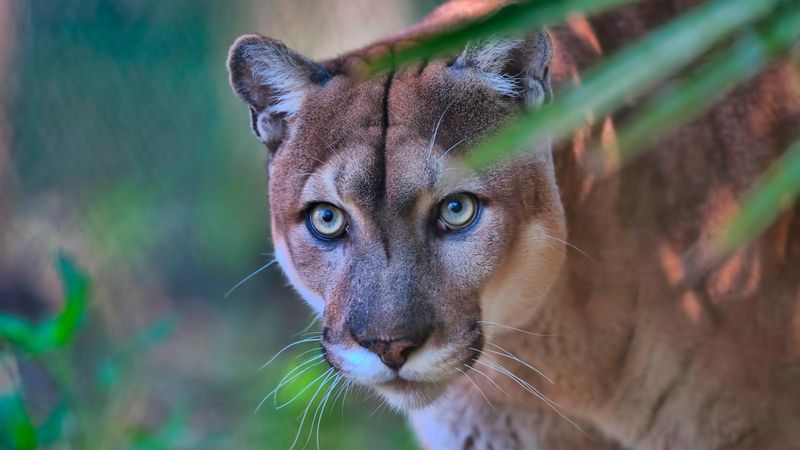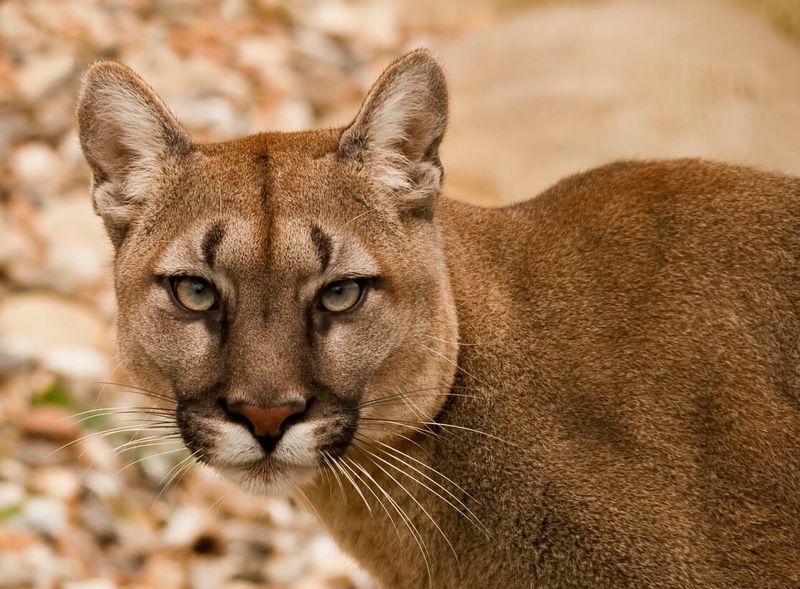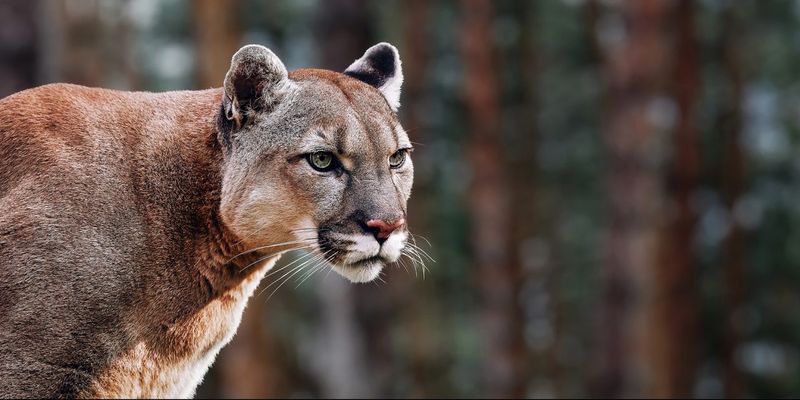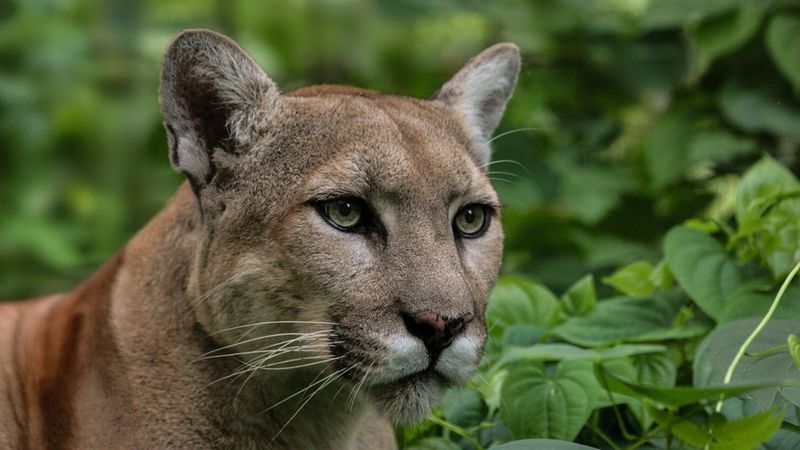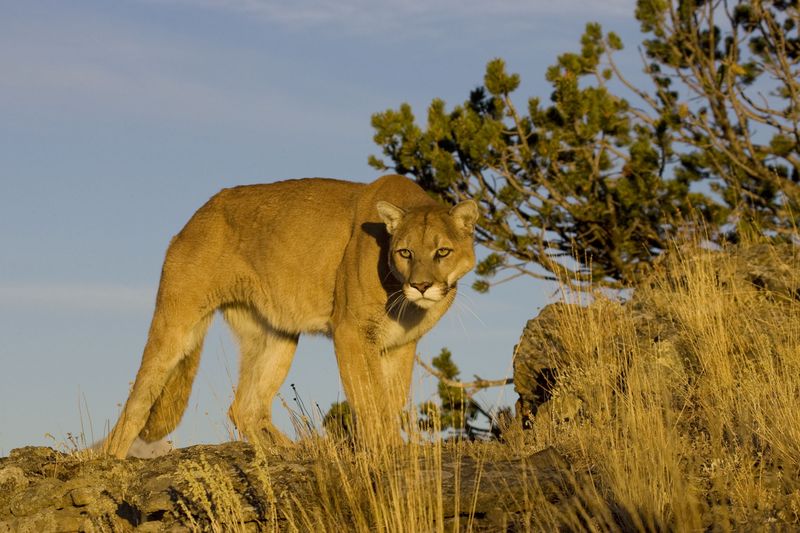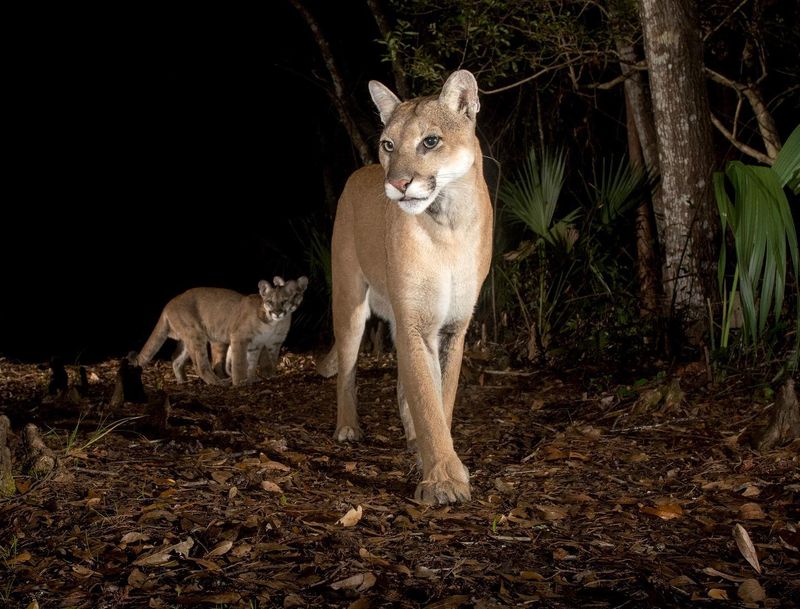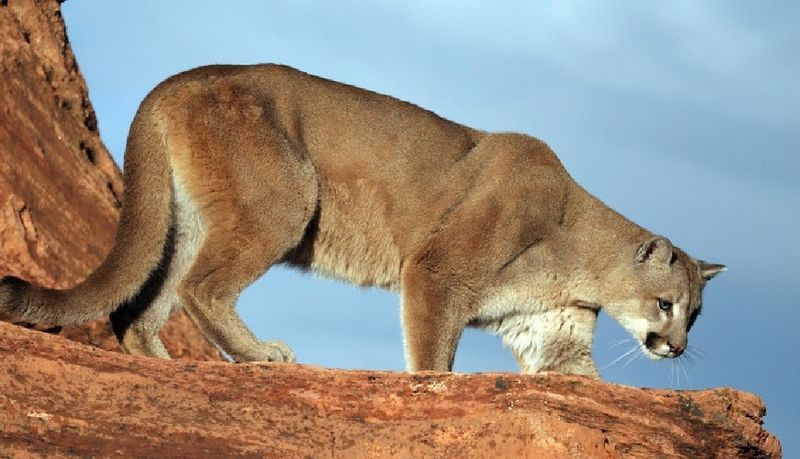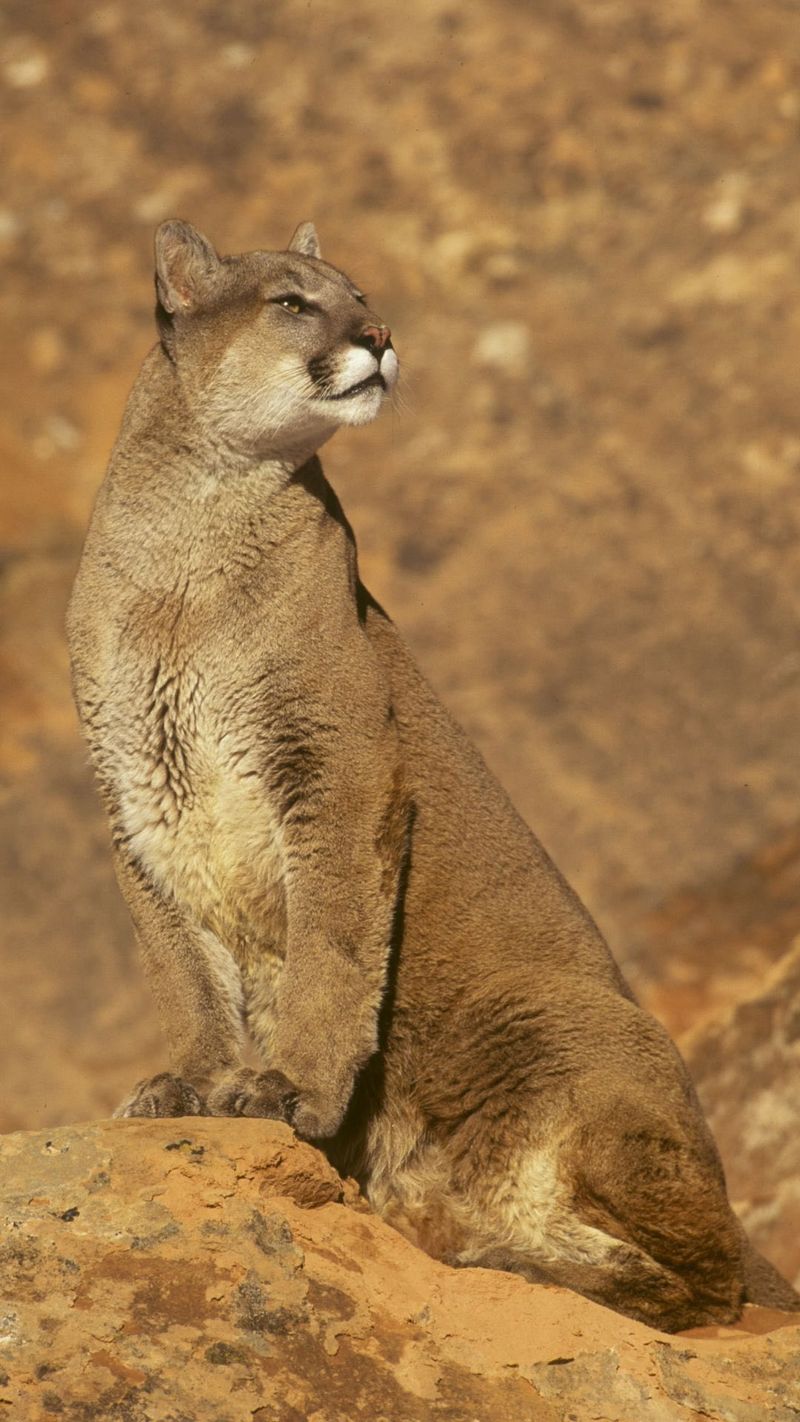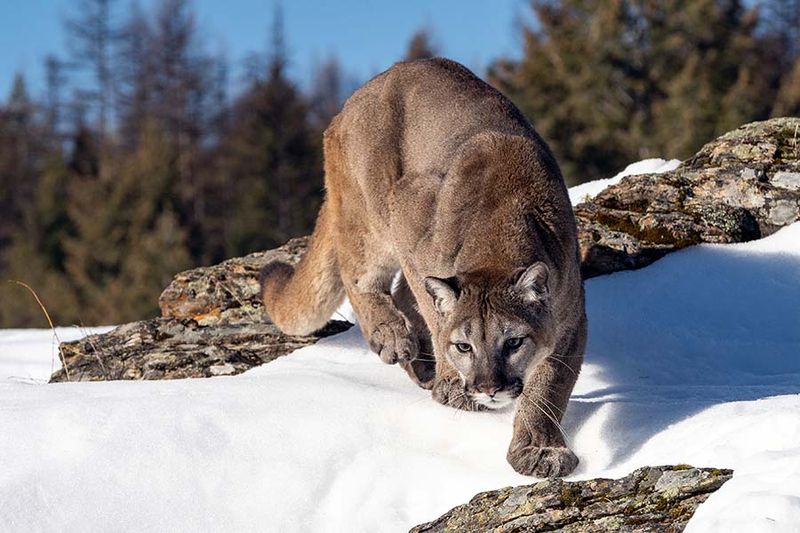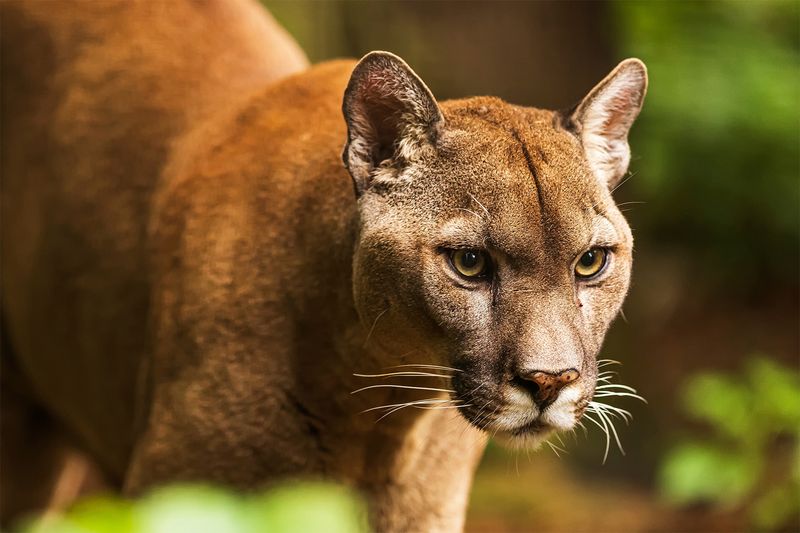📖 Table of Content:
Panthers—also known as cougars, pumas, or catamounts—are among the most elusive and fascinating apex predators in North America. These solitary felines command vast territories, navigating forests, deserts, and mountains with agility and stealth. While their official range once spanned the entire continent, their current populations are more concentrated in the western United States, with one isolated group surviving in Florida.
The distribution of panther populations today reflects the unique interplay between habitat availability, human encroachment, and state-level conservation efforts. States that offer expansive wilderness areas and have limited human development tend to support larger and more stable populations. At the same time, panthers face threats from habitat fragmentation, vehicle collisions, and conflict with humans, making their survival increasingly dependent on informed wildlife management.
This article explores the ten U.S. states with the highest estimated panther populations, revealing how geography, policy, and ecology shape where these majestic animals continue to thrive. From the foggy forests of the Pacific Northwest to the arid canyons of the Southwest, each state offers distinct terrain and conditions that influence panther behavior and numbers. These summaries also highlight the specific challenges and protections in place, painting a fuller picture of the modern mountain lion’s reality in America.
1. California
Home to some of the most diverse ecosystems in the United States, California supports an impressive panther population estimated at around 4,500. Mountain lions roam freely across large portions of the state, from the redwood forests of the north to the coastal ranges and inland Sierra Nevada. The state’s varied elevations and mild climate create year-round hunting and denning opportunities for these solitary predators. Urban sprawl, especially in southern California, has brought them into increasing contact with humans, prompting both public concern and greater scientific study. Agencies like the California Department of Fish and Wildlife have implemented tracking and non-lethal management strategies to better understand and preserve their populations. Initiatives such as wildlife crossings and protected corridors aim to reduce road fatalities and genetic isolation among lion groups. Despite these efforts, the balance between development and conservation remains a central issue for the species here.
2. Oregon
Stretching from the Pacific Coast to the mountainous interior, Oregon boasts a panther population that may exceed 6,000 individuals, one of the highest in the country. These big cats find refuge in the state’s vast national forests and remote wilderness areas, particularly in the Cascade Range. Unlike in some states, Oregon allows regulated hunting of mountain lions, which contributes to ongoing debate between wildlife advocates and game managers. Seasonal shifts in prey availability, especially deer and elk, influence their movement and interactions with rural communities. Panther sightings are not uncommon in parts of the state, but actual confrontations remain rare. Public education campaigns have focused on teaching residents how to coexist with these stealthy neighbors. The state’s emphasis on forest preservation continues to offer critical habitat stability for the long-term health of the population.
3. Colorado
Set in the heart of the Rocky Mountains, Colorado provides ideal terrain for a robust panther population estimated between 3,800 and 4,400. Extensive backcountry regions offer cover, water sources, and ample prey, allowing mountain lions to thrive across much of the state. Wildlife researchers have tracked the species in both remote and suburban zones, where expansion has led to increased interaction. Unlike some states, Colorado has invested heavily in scientific monitoring, using GPS collars and field studies to collect data on migration patterns and health indicators. Education programs, particularly in mountain towns, have helped reduce conflict by advising homeowners on how to secure pets and livestock. Regulated hunting is also used as a population control measure, with quotas set annually. All these efforts contribute to a relatively stable outlook for panthers in the region.
4. Washington
In the evergreen wilderness of Washington, an estimated 3,600 panthers roam the rugged terrain with quiet dominance. The state’s rain-soaked forests and mountainous regions, especially the Cascades and Olympic Peninsula, offer perfect cover and hunting grounds. Dense tree cover and steep slopes make sightings rare, even where populations are dense. In recent years, growth in rural development has brought these predators closer to human settlements, raising concerns about safety and livestock. Washington’s Department of Fish and Wildlife promotes non-lethal deterrence and community awareness to address these tensions. Efforts to restore elk and deer populations in certain areas have also benefited mountain lions by ensuring a stable food source. Continued conservation of natural forest corridors is essential to maintaining these populations over the long term.
5. Nevada
Although often associated with barren desert, Nevada harbors a healthy panther population of around 3,400 individuals. The state’s mountainous zones, including the Sierra Nevada and the Ruby Mountains, provide secluded habitats ideal for these reclusive predators. These regions offer cooler temperatures, vegetation, and prey species such as mule deer, despite the broader arid climate. Mountain lions in Nevada are known to travel vast distances to locate mates or hunting grounds, often crossing inhospitable areas. Wildlife managers in the state allow tightly controlled hunting, which serves both population monitoring and management purposes. Human encounters are infrequent due to the remoteness of their typical ranges. Nevertheless, the state’s increasing development pressure poses a long-term threat to traditional migration routes and wilderness spaces.
6. New Mexico
Rugged deserts, canyons, and forested mountain ranges in New Mexico are home to an estimated 3,500 panthers. These large cats are particularly well adapted to arid environments, utilizing high ground and riparian corridors for shelter and water access. Panther activity is most concentrated in areas like the Gila Wilderness and Sacramento Mountains, where human presence is sparse. As in other states, conflicts sometimes arise near ranching communities, where lions may target vulnerable livestock. Wildlife agencies employ a mix of research, public outreach, and hunting regulation to manage the population sustainably. Despite challenges, New Mexico’s vast public lands provide critical space for long-term viability. The resilience of the species in this state reflects its capacity to thrive in harsh and variable conditions.
7. Arizona
Nowhere else does the harsh desert meet high mountain peaks quite like in Arizona, where between 2,500 and 3,000 mountain lions reside. From the Sonoran Desert to the Mogollon Rim, the state’s dramatically varied terrain supports a wide range of prey and shelter options. These predators are commonly monitored by researchers from state and tribal wildlife departments, whose work informs local policies. While attacks on humans are exceedingly rare, panthers have occasionally been spotted near suburban developments in Phoenix and Tucson. The use of trail cameras and motion sensors has greatly increased understanding of their movements in recent years. Arizona permits tightly regulated hunting, though there is active debate around the ethics and conservation value of this practice. Overall, the state plays a key role in preserving genetic diversity among Southwest panther populations.
8. Utah
Nestled among canyons, forests, and alpine ridges, Utah’s estimated 2,300 mountain lions represent a vital part of its natural ecosystem. These predators inhabit regions from the Wasatch Range to the southern red rock country, where they pursue prey like deer, elk, and small mammals. The state implements annual hunting quotas, carefully adjusting limits based on field data and ecological conditions. Recent droughts and wildfires have disrupted some habitats, pushing lions into new and sometimes more populated areas. Public sentiment in Utah tends to support both recreational hunting and wildlife conservation, creating a delicate policy balance. Educational outreach to campers and hikers has helped reduce misunderstandings and fear surrounding panther presence. Continued land conservation is key to ensuring their survival amid growing environmental pressures.
9. Idaho
Thick forests and high mountain valleys provide a safe haven for around 2,000 panthers in Idaho. These big cats are most active in remote wilderness areas like the Bitterroot and Salmon-Challis regions, where human influence is minimal. The panther population here is considered stable, aided by abundant prey and expansive protected lands. State wildlife officials closely monitor reports of sightings and potential threats to livestock. While hunting is permitted, Idaho emphasizes sustainable quotas and mandatory reporting to ensure accountability. Conservation groups in the region have worked alongside ranchers to reduce conflict using non-lethal deterrents. This cooperative model has become a valuable blueprint for balancing predator conservation with agricultural interests.
10. Montana
Towering peaks, dense forests, and expansive backcountry make Montana one of the most ideal environments for mountain lions, with an estimated population ranging from 3,000 to 5,000. The species thrives in regions like the Bitterroot Mountains and Glacier National Park, where human encroachment remains limited. Montana has one of the oldest regulated mountain lion hunting programs, which continues to shape public perception and management approaches. Wildlife biologists conduct annual studies to assess the age structure, reproductive rates, and range patterns of local populations. Ranching interests often clash with panther conservation, but ongoing dialogue has fostered more nuanced solutions. Collaring and tagging efforts have expanded in recent years to better track movements and behavior. The state’s wide-open landscapes ensure that mountain lions remain a lasting fixture in its natural heritage.
